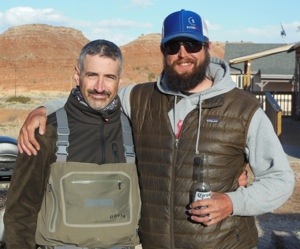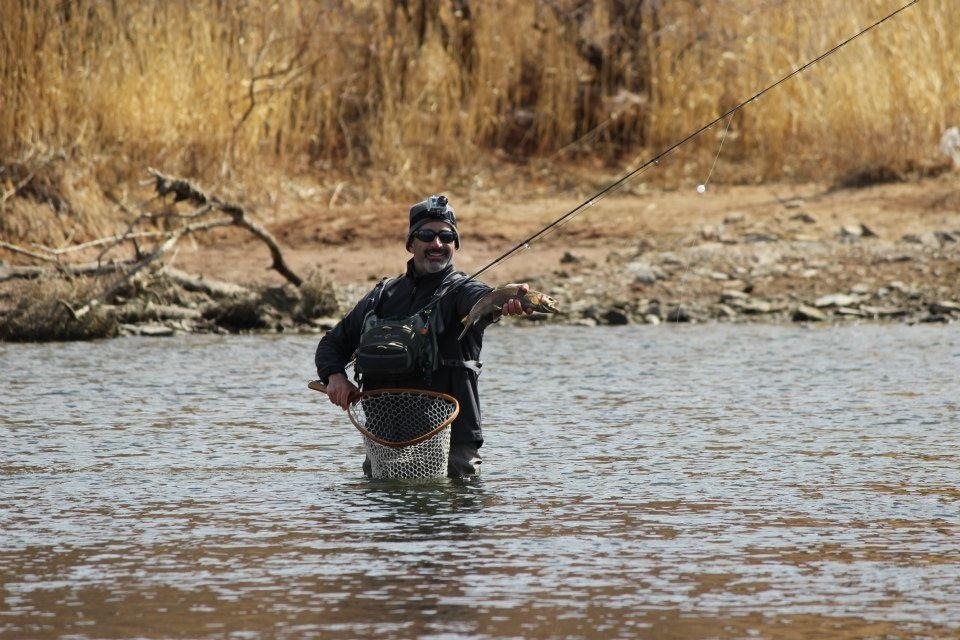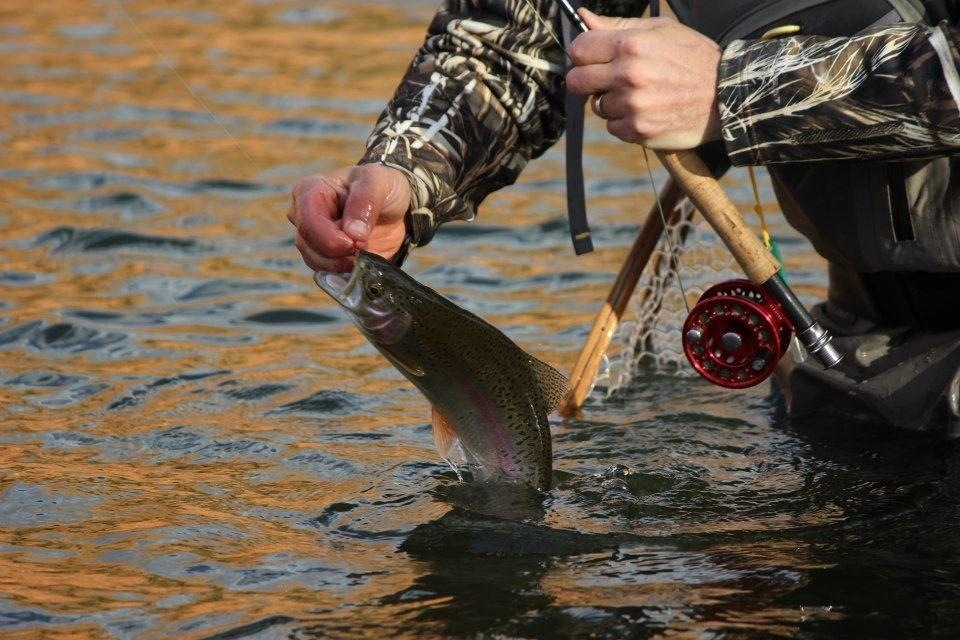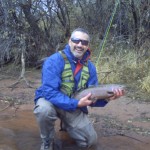For the last six years, early spring has meant a journey to the North Platte River in central Wyoming. The river is packed with large, aggressive and hungry trout. The land that surrounds the water has the characteristics of the old west; a limited amount of people, plenty of indigenous creatures, and predictably unpredictable weather. It’s a unique place that allows visitors to escape life for a brief period of time.
2014 represented an atypical adventure for me. My fly fishing mentors, Chad and Joe Butler, completed their annual visit just one week prior to my trip. Additionally, the group that I had invited all canceled just days before departure. While I absolutely enjoy fishing with friends, this trip is about personal mental relief. For a few of days, the mobile phone is off, and emails go unchecked. I become all consumed with pursuing fish.
Day One
After the five hour drive from Parker, the contents of my truck were quickly unloaded into the cabin. I slipped into my waders, strapped on my chest pack and rigged my fly rod. The river is only minutes away, and the anticipation makes it hard to focus on the task at hand. I had planned to patiently scout my favorite spots along the river, and drop in only when big fish exposed themselves to me. When I started my truck, the strategy went the way of the dodo bird. I hit the gas and darted to one of my favorite holes. While there was not a vehicle present, I witnessed a lone fisherman making casts against the river bank. A three minute wade put me at the top of an elegant riffle. My two fly rig consisted of a chartreuse egg on top, and a Slade Fedore designed leech as the trailer. The initial drift hugged the near seam, allowing the flies to move slowly over the shelf into deeper water. Stunningly, my indicator pulsed, so I quickly jerked the rod over my left shoulder. The trout raced across the fast water then headed downstream. I followed the fish until he moved into an eddy and could be easily netted. Over the next five hours, I hooked over two dozen fish but I landed only half of them. There was size to most every trout with the largest equaling 21”.
Day Two
About a month before my vacation, I planned my second trip with guide extraordinaire, Slade Fedore. Slade is a Casper native, expert fly fisherman, and a great person. He gives advice without being demeaning, and provides timely compliments, but he is never patronizing. Slade and I like to get after it early, so we were the first boat to unload on the Reef. Our initial float produced three great fish. Heading downriver, we kept picking fish up on both the egg and the leech. The weather got a bit windy and snowy, but the bite continued to be hot. The day was highlighted when a gigantic golden eagle plucked a pheasant from the river bank. Minutes later, a bald eagle flew twenty feet above us, and landed on a fence post paralleling the waterway. Almost simultaneous to the eagle perching itself, a big trout exposed himself in the middle of the river. Slade and I both noticed the fish, and I made an immediate cast to a spot ten feet in front of him. While the first cast was junk, my second cast hit the mark. Seconds after my upstream mend, the bow slammed my fly, and burned 40 feet up and across the river. He was big and my heart was racing. The fish pulled a 180 and screamed downriver stripping fly line off the Bozeman RS Reel. I applied gentle pressure with the hope he would behave. Instead of acquiescing, he started to perform violent headshakes and even took to the air a few times. We managed to get him to the side of the boat, but just out of the reach of Slade’s net. When he was sufficiently recovered from the initial battle, he cut across the river then back behind the boat. Only eight feet from me, I saw the hook perilously hanging in his right cheek. A final thrash dislodged the fly, and the fish disappeared into the depths of the river. Disappointed, I hung my head, realizing that I had just lost a 23” slab. We ended an awesome day drinking a few beers while listening to my cabin neighbors perform a bit of authentic blue grass music.
Day Three
Recognizing that the weekend was approaching, and the crowds would start to appear, I was up early in order to get to a favorite spot. It did not take long for the river to begin fill up with fellow fishermen. By early afternoon, I counted twelve rods executing similar nymphing techniques. In order to experience much needed solitude, I walked to a more remote, but historically less productive area. While there is no distinctive structure, I found water that supported a steady drift. Not dissimilar from the rest of the river, I started to frequently hook and land good size rainbows. As the late afternoon approached, we made a decision to head to a reservoir and fish the ice out. Reports were that there were huge trout hitting crawfish imitations stripped slowly along the bottom. We talked to some bait fisherman who had picked up a few nice fish during the afternoon, but they told us that fishing was slower than in past years. Nevertheless, we spent hours casting big streamers around ferocious winds. As my mind wandered, an enormous leviathan appeared from the depths of the lake and took a slow pass at my bait. Unfortunately, she did not commit to the meal, and headed back where she came from. The day ended with only one of us landing a trout. The lack of action did not take away from the immense splendor of the early evening in the western United States.
Day Four
I decided to cut my trip short by a day. The weekend crowds were amassing, and competing for fish was not a part of the game plan. There is a great hole downstream that can produce a lot of action, but can also fill up quickly. To that point, I got up early and made certain that I was the first person at the spot. While the weather was perfect, the fish were semi-responsive. Uncharacteristically, I had to work hard to invoke an initial strike. Four fish later, I began to witness other anglers making their way into the river. In addition to my fellow waders, there were many boats filling up the most fertile area in this section of river. I realized that the trip was over, and it was time to depart.
The ride home is long, but full of pleasant memories. I was able to think about the fish I had caught as well as the many that evaded my net. After six years fishing the Platte, I have earned veteran status. I know the water, and understand how to catch fish. Year seven awaits!








![Reblog this post [with Zemanta]](https://img.zemanta.com/reblog_e.png?x-id=08f1186b-47f6-408c-ba8c-915cbb9b7417)